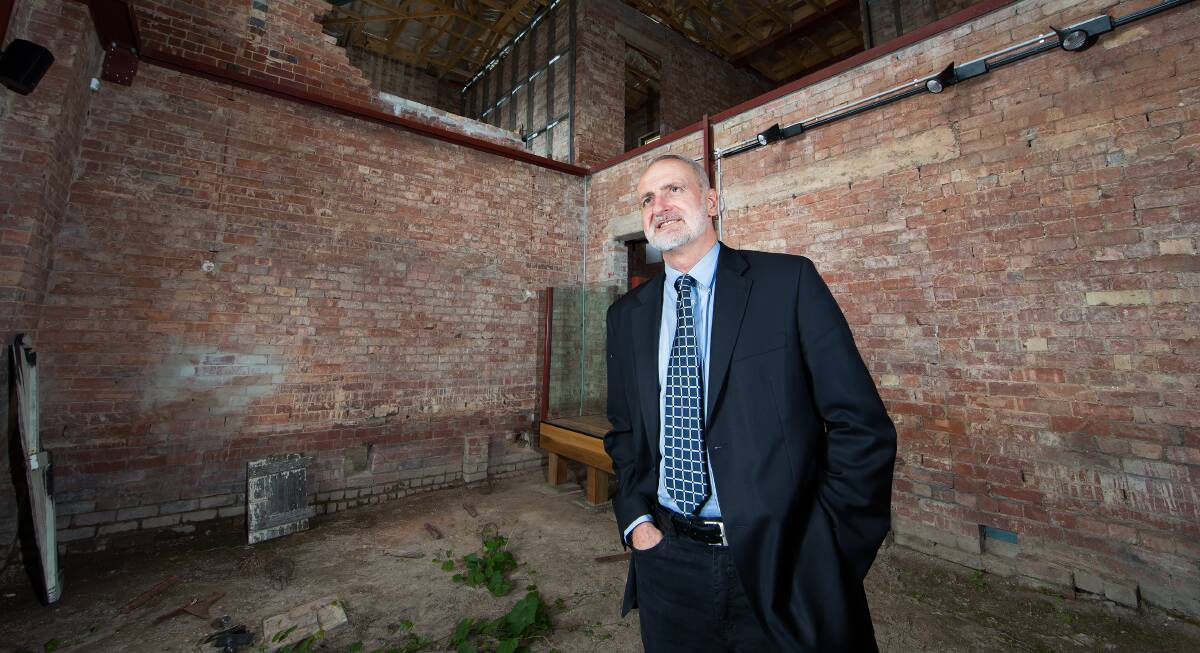
Australia is on track to join the international organisation of 16 countries running the biggest telescopes in the world thanks in no small part to Professor Matthew Colless, an esteemed astrophysicist being recognised with one of the country's highest honours.
The distinguished professor from the Australian National University helped steer a collaboration between education institutions which saw them take over the running of the country's biggest telescope and provided a European Southern Observatory strategic partnership by the federal government.
There is now optimism in the astronomy community that Australia will become a full member of the international organisation when the temporary agreement finishes up in four years time.
Professor Colless is working from the University of Oxford for the next 12 months to continue advancing the partnership, having started a 12 month Royal Society fellowship on January 1.
During his time at Oxford, Professor Colless will also continue the research, specialising in cosmology, that's seen him recognised alongside some of the country's brightest minds this Australia Day.
Professor Colless has been appointed an Officer of the Order of Australia for distinguished service to scientific research, particularly to astronomy and astrophysics, and to professional societies.
His work this year will focus on surveys of galaxies, which includes trying to map out the structure of the universe, in order to understand how much matter there is and where it comes from.
He said while Australia is very strong in astronomy, the country's outstanding Australian astronomers don't have access to the biggest telescopes in the world.
"The very biggest ones in the best site are now being built by the Europeans. They have four, eight-metre telescopes, which our strategic partnership gets access to," Professor Colless said.
"If we become a full member, then we'll also get access to the giant 39-metre telescope being built now, which is a five-times bigger, enormous facility."
The giant telescope is being built in the Atacama Desert in Chile, alongside Alma, a world-class radio telescope the partnership would also provide access to.
Professor Colless helped drive the partnership in his role as director of the Research School of Astronomy and Astrophysics at the ANU from 2013 to 2023, with support from fellow astrophysicist, Vice-Chancellor Brian Schmidt.
The humble appointee is the first to point out that scientific advancement in the field of astronomy is rarely achieved by one individual working alone.
"The whole Australian astronomy community - all the 16 universities that are working in astronomy research - got together and we have a community-wide decadal plan," Professor Colless said.
"The number one item in that decadal plan is jointly shared between joining the European Southern Observatory, and completing the building of the Square Kilometre Array."
Construction of the Square Kilometre Array, which will be the largest radio telescope when it is completed in 2028, is currently underway in Western Australia, with its other half being built in South Africa.
"Our eyes are firmly fixed on achieving the other big goal which is joining the European Southern Observatory," Professor Colless said.
"Australia's actually had quite a long history of being strong in astronomy and a large part of that is simply due to our geographical location.
"We were, of course, one of the earliest places from which people were able to study the southern skies.
"After the Second World War, a lot of people who'd worked in the British radar program came out and started radio astronomy in Australia. Then we had the Anglo-Australian telescope being built, which at the time was one of the largest telescopes in the world, and that, again, brought a wave of people out."
Professor Colless said the community also had the advantage of being relatively small in Australia.
"We're able to get together and make a definite plan for the whole Australian astronomy community, and follow through on that in a very coherent way. And we've done that very successfully."
Professor Colless said he has loved astronomy all his life, and while personally proud of his achievements, it was lovely to have recognition from the Australian community.
He emphasises his achievements were possible due to the talent of the people he had collaborated with.
"I've been incredibly fortunate to work with some outstanding people, both at the ANU and the Australian Astronomical Observatory," Professor Colless said.
"I would love to see them recognised as part of this."
We've made it a whole lot easier for you to have your say. Our new comment platform requires only one log-in to access articles and to join the discussion on The Canberra Times website. Find out how to register so you can enjoy civil, friendly and engaging discussions. See our moderation policy here.







